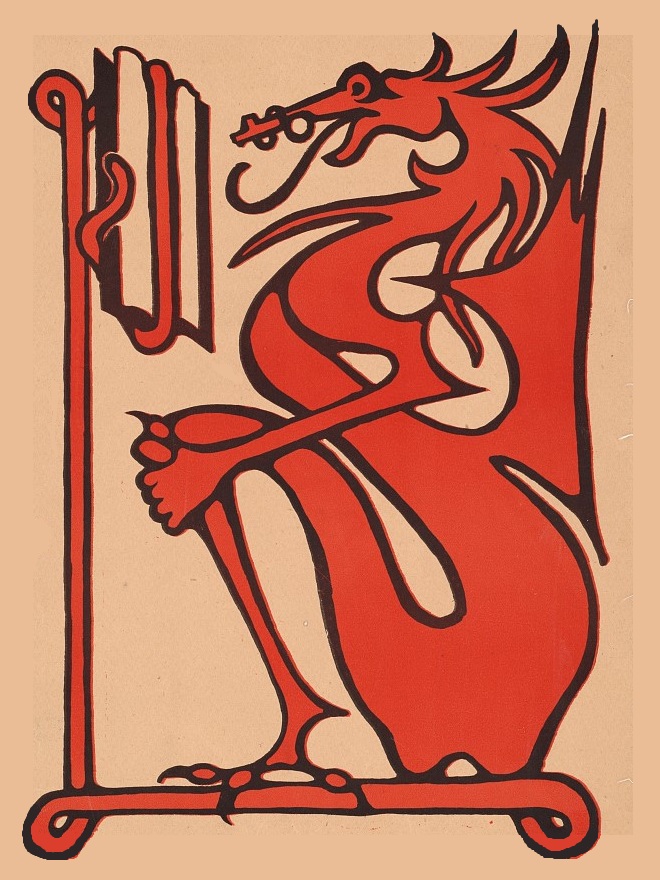The person writing these words is not you. Well, that’s obvious, give or take the previous entry’s attempt to blur the edges of the individual. (You got to open your mind, man.) It’s obvious, but does the reader believe it? You can understand the words; they’re written in your language. For you and the text to share the world together requires, frankly, no effort at all. You can relate to the text like an entitled child who does not consider the needs of others. You can relate to the text like an entitled adult who does not consider the needs of others.
Let’s try again.
The person writing these words is not like you.
Does that sentence scare you? There is no immanent threat; it’s a simple statement of fact. Each person is unique; did you know that, dear child? … But does that sentence scare you? Fear is a relationship to the unknown. Let yourself be reminded that much, very much of other people is unknown to you. In light of that, you should be scared. It’s probably not healthy to feel fear of other people too keenly too many hours per day, but to feel none at all would be dishonest. That would be a state of denial. An important part of human life is this rhythm: the known and the new. The familiar and the strange. Family and strangers.
Inhale. Exhale.
Feel fear. Feel calm.
This rhythm: the reader receives this from the writing. The text has no needs but it is not naive; it is dead but not dumb. Now, the act of reading is not inclusion, coexistence, toleration; those things require other people. And other people are not you; that’s why we call them the Other. A beginning is a birth. Dawn is danger.
This is our third and final article inquiring into Bruce Coville’s recurring themes, the persistent, indeed preoccupying tropes of genre fiction. No such inquiry could be complete without posing two key questions, “monsters!?” and, “aliens!?” Coville could admiringly be categorized as a post-Silver Age science fiction writer, an intimation of the New Weird (RIP; it was fun while it lasted), who expresses delight in the fantastic, even the phantasmagorical, for its own misshapen sake. He is also an early post-Cold War writer, laboring to democratize The Other, essentially saying, “You’re weird, but it’s okay; I’m weird, too; goddamn everybody is weird around here,” and to prove the point, occasionally saying nonsense. It would be no surprise if we were to learn he was a follower, in his personal life, of statesman and spiritual leader Oingo Boingo, known for the adage, Weird science(!). Fans of Coville will also be familiar with the children’s chapter books of William Goldman, who wrote that someone wrote that someone said, “Life is pain.” Coville’s message is closer to, “Life is bonkers.”
I have to admit, though—I already knew life was bonkers before reading Coville. Didn’t you? So why—why does he (like Oingo Boingo) keep saying that over and over again?
In this article, we think we have the answer, and it’s nothing to do with the weirdness of some third party. It’s nothing to do with the weirdness of the writer (well, maybe a little bit, but stay focused). The reason has to do with the reader.
From the point of view of everyone else on earth, you’re the alien. You’re the monster. Yet, we are prepared to share this earth with you. We, the aliens, sympathize with you, not despite, but because of your alien-ness. Weird … !
My word for Coville’s doctrine here is, “pluralism.” Those who read the previous article will notice that pluralism strongly contrasts assimilationism—in fact, my claim is that Coville intends the one to inoculate against the other. I hate to go out on a limb, but you can imagine someone, somewhere, saying, “Separate is inherently unequal.” Stepping briefly into the world of grown-up literature and nonfiction, although like Coville I was a child of the United States, I don’t get my understanding of pluralism mainly from the USA melting pot with its Chinese Exclusion Act of 1882, its Jim Crow and its McCarthyism. I only wish it were otherwise.
No, I understand pluralism as that basic necessity, humanity’s ABCs, which has been shared with the world by those who spent their nursery days with the East Blocks. Of course Ukrainian resentment of shared Polish-Ukrainian history is unfair to Poles living today. Of course labor grievances fail to take into account the costs, financial costs, geopolitical costs, that striking workers incur from Poland’s party elite. But even the most staunchly nationalist Pole knows that Polish sovereignty must be defended, and that it cannot be defended by the military if Moscow controls the black earth, and cannot be defended in the Sejm if the labor unions of Gdansk in 1980 are treated the way Thatcher’s Britain will treat the labor unions of Nottinghamshire in 1984. So, in at least one real example in Poland, pluralism triumphs over the ideology of fear. The Polish nationalist listens to the wishes of the Ukrainian minority and offers a compromise, and the ethic minorities in turn listen to the worldview (even though it’s scary) of the nationalists. The Polish military defends the existence of a Ukrainian state (until 2013 but that’s another story). The ascending middle class pays, literally pays part of their gains to the newly self-determining but newly unprotected proletariat.
In Solidarity, the cooperating parties don’t have to agree—don’t even have to understand each other. But they have to try. It’s one of those magical things. Making an honest effort is good enough. If the two parties draw apart, they will both cease to exist. If they defend one an other’s right even merely to exist, they succeed, as surely as if they did understand each other. This requires the ability to live, maybe for a long time, more or less comfortably, maybe permanently, with uncertainty. This is the confrontation with the unknown.
So a doctrine of pluralism in politics can at least be conceived of. And Coville’s writing occasionally references the Cold War—space aliens in small-town USA are mistaken for Russian spies; the entire population of an earth-like planet dies simultaneously due to a nuclear exchange; scientists endure administrative panics over spying on a secret project. In a thinly-veiled retelling of Star Trek (the original series), members of a spaceship crew come from contrasting backgrounds that resemble East and West. But can the reader ever understand pluralism as a doctrine that speaks to the individual?
Many of Coville’s novels center images of (almost too-idyllic) daily life that totally decline to speak to geopolitics: the small town, the local wetlands, the country veterinarian. The progressive Jewish-coded elementary school teacher. Starting a new school. Walking through the forest. Antiques for sale in an old house. Thrown into a small group with the children of your parents’ co-workers. The list goes on and on. What unknown must we confront, and live with, in these scenarios? Who is the Other?
You are.
Pluralism is a two-way street. This pattern rests so deeply in Coville’s storytelling that his scenarios sometimes leave out the successful end-stage of cooperation altogether. But in every single narrative, the protagonist must cope with an other’s point of view, and not an easy point of view to relate with, but one that is incomprehensible, or unpredictable, or unfair, or uncaring, or factually wrong. You can never guarantee that the other will listen to your concerns; you can only guarantee that you listen. Once you’ve listened, by all means, use your capacity for reason to decide how to reply, but you can only make a truly reasoned decision after you do the hard work of confronting the unknown.
This is a very scientific mindset. It’s also a mindset that remarks on the human sciences, saying, the subject doesn’t always cooperate. Good luck; you’ll need it!
So, I would summarize the doctrine of pluralism on the individual level as an instruction, an injunction. You have to try to understand the other; and you will never understand. In light of that, what can you do? Obviously, you’ll just have to give the other as much grace as possible. The benefit of the doubt. Remember: they’re more afraid of you than you are of them. They don’t understand you, either!
Be kind.
That’s the injunction: be kind. That (and a little elbow grease) is all you need for solidarity to work in the end. It’s not easy, because you’re afraid, too, but making an honest effort is enough. Be … as kind as possible.
To clarify, here’s a long short-list of examples of symbolism in Coville’s stories that represent an incomprehensible, Other point of view. See? When I phrase it like that, it’s easy. This is the entire project of the New Weird. Space aliens, with their gross bodies and their gross food, with their big scary teeth and their music that is painful to human ears, with their customs that are only explained after the child hero has committed some violation, are a symbol for the Other. You’ll never understand them. Yet, if you give up on understanding them, they’ll be forced to kill you. Coville writes multiple stories in which the aliens are more scared of us than we are of them. The only strategy for self-preservation is to be kind.
Magic that transforms people’s bodies is a symbol for the Other. Animals have feelings. You might get turned into an animal. Goblins only feel okay when they are allowed to be goblins. Being a movie monster could be a fashion statement; in that case, it would be rude to shrink back in terror; anyway, monsters are cool; anyway, monsters are good to have on your side, so be kind.
Magic that grows or shrinks people’s bodies is a symbol for the Other. A giant has feelings, too. If a giant is cruel, the cruelty is evil, but the gigantism is not. Maybe a giant started out small; maybe a person smaller than you is the right size for themselves. When we are the wrong size (like a child), we move through a world that was explicitly not built for us. This gives us a feeling of alienation; we require grace.
Pets are a symbol for the Other. We do not perfectly understand our pets, but we try. Some pets are mean or spoiled; others, stupid. That doesn’t make them bad; they can still be a loving companion. Aliens have alien pets. Coville’s work would have a perfect score on www.DoesTheDogDie.com (the dog never dies; that would not be good storytelling; it would not be entertaining).
A mind that is wholly or in part artificial is a symbol for the Other. This mind has a different structure, a different history from your own. It is unreliable, unpredictable and, once set on a course, terrifyingly intractable. How different is it? You will never know even that. But from the point of view of your fellow human beings, the same is true of your mind.
Nakedness or wrong clothes is a symbol for the Other—indeed, a symbol that foregrounds the interplay between our discomfort with the other and their discomfort with us. Trying on different clothes does not injure children, but bullies do.1 The hero trapped in a magically transformed body, finally returned to his child self and discovering that the magic destroyed his clothes, has to streak through the suburban neighborhood as one last trial to reach safety. His nakedness is as new to him this morning as his magical body was yesterday. The neighbors will never understand.
Teachers, symbolically, help us relate to the Other. They make the incomprehensible, hence. They prevent us from making fools of ourselves. They allow us to make fools of ourselves.
The trope of alien abduction is a symbol for the Other. The stranger uses their power over us to bring us into their strange world, to make us strange, like them. Of course, in real life, when we bring each other into our plural cultural worlds, we do so accidentally. We do so precisely because the victim, no matter how xenophobic, has the innate human ability to learn, to comprehend, to become multilingual, to become a citizen of the world, of the galaxy. Those who are not shown around the galaxy: they’re the only ones who foolishly interpret the expansion of your horizons as some kind of wickedness on the part of your alien neighbors.
A story with an ambiguous ending is a mode for our relationships to the Other. The story’s job is to be the way the story should be, not necessarily to solve all problems. In some of Coville’s stories, the hero, by having touched magic, is themselves touched, and is permanently alienated from the “real” world. They don’t need your help. There are some things you will never understand. Let them be weird. Let them be.
The person writing these words is not you. You are not the person writing these words. Suppose I hurt you? Don’t hurt me back. Or, if you must, at least try to improve things between us, afterward. These are words that a text can say, which a person can also say. When the writer writes these words, they bridge the distance between solitude and society: be … as kind as possible.
- (Money spent on Harry Potter is a political donation to Hate.) ↩︎




